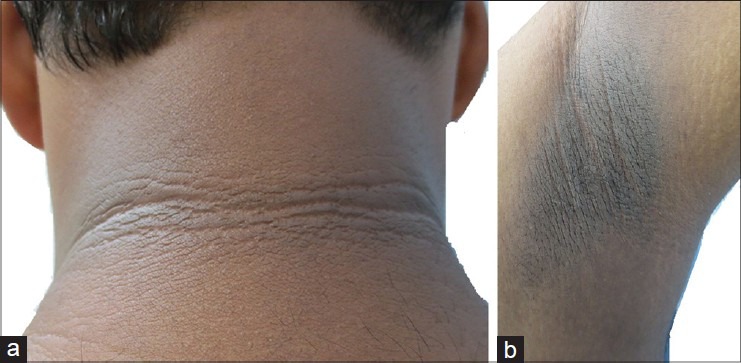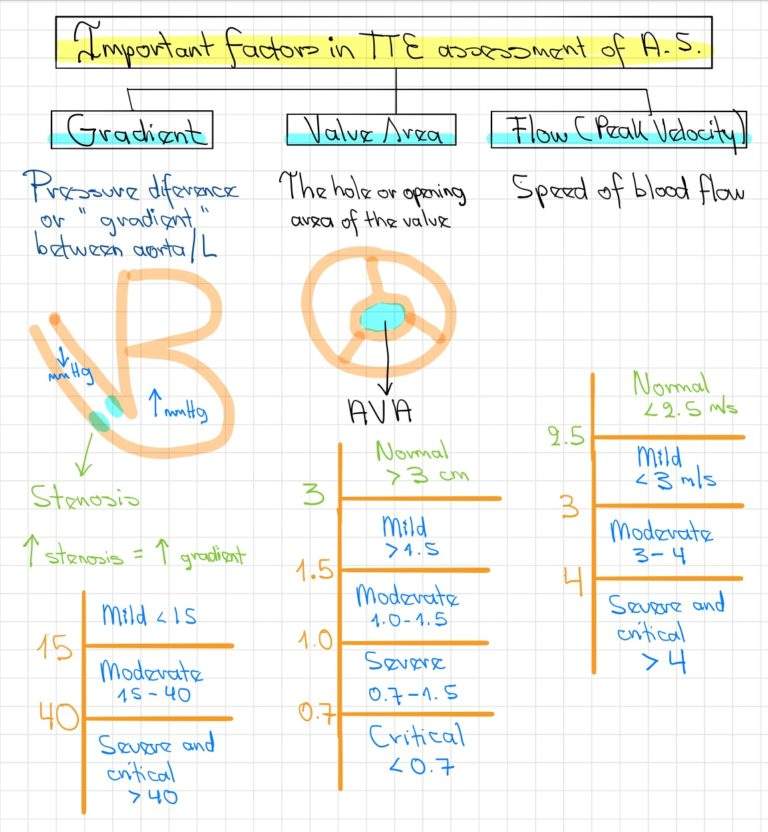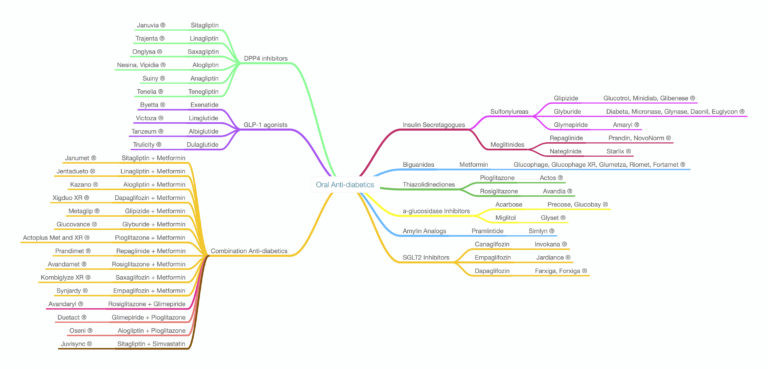Acanthosis nigricans (AN) is a skin manifestation seen in patients with certain medical conditions such as insulin resistance, malignancy, drug-induced acanthosis nigricans and others. There are some important aspects to remember for the board exams.
- Clinical features: Hyperkeratotic and hyperpigmented plaques with a classic velvety texture, typically in the axilla, posterior neck, and groin (predominant in flexural areas). Can also be associated with acrochordons (finger-like pedunculated skin outgrowths present in flexural areas).
 Source: [An approach to acanthosis nigricans – Figure 7] [PMC Article] by [Meghana Madhukar Phiske] is licensed under CC BY-NC-SA 3.0.
Source: [An approach to acanthosis nigricans – Figure 7] [PMC Article] by [Meghana Madhukar Phiske] is licensed under CC BY-NC-SA 3.0.
PATHOGENESIS
Acanthosis nigricans is related to insulin resistance. Insulin has the ability to cross the dermo-epidermal junction and reach keratinocytes. When insulin is secreted in higher quantities (insulin resistance), it stimulates the growth of keratinocytes and leads to acanthosis nigricans – hyperplasia of the stratum spinosum is seen in microscopy. Another substance that is linked to acanthosis nigricans is the insulin-like growth factor 1 (IGF-1). The predilection of acanthosis nigricans for flexural surfaces of the body may suggest a role of friction in its pathogenesis.
In malignancy, the neoplastic cells increase the production of transforming growth factor alpha (TGF-α) which is structurally similar to the epidermal growth factor alpha (EGF-α). The stimulation of the receptor of EGF-α by the higher levels of TGF-α stimulates keratinocytes to proliferate.
ETIOLOGY
There is a myriad of conditions associated with acanthosis nigricans. The most important are related to metabolic syndrome and malignancy.
- Metabolic syndrome: Insulin resistance, visceral obesity, hyperlipidemia (cholesterol and triglycerides), hypertension.
- Diabetes mellitus type 2.
- Medication-induced AN: systemic steroids, oral contraceptives, estrogen therapy, insulin, nicotinic acid, protease inhibitors, etc.
- Malignancy especially gastric carcinoma and familial cancer syndromes such as multiple endocrine neoplasia (MEN).
- Metabolic conditions: Cushing syndrome, hypothyroidism, Addison’s disease, polycystic ovary syndrome, acromegaly, and others.
- Autoimmune: associated with systemic lupus erythematosus.
There are other causes of AN but the most common and important to bear in mind for the board exams have been mentioned.
TREATMENT
Treatment depends on the localization, severity, patient’s cosmetic concerns, and management of the associated risk factors (treating the underlying cause).
PRACTICE QUESTION
References:
- Phiske MM. An approach to acanthosis nigricans. Indian Dermatology Online Journal. 2014;5(3):239-249. DOI:10.4103/2229-5178.137765. [PMC].
- Acanthosis Nigricans. Drugs & Diseases. Medscape.
- Mukherjee S, Pandit S, Deb J, Dattachaudhuri A, Bhuniya S, Bhanja P. A case of squamous cell carcinoma of lung presenting with paraneoplastic type of acanthosis nigricans. Lung India : Official Organ of Indian Chest Society. 2011;28(1):62-64. doi:10.4103/0970-2113.76305. [PMC]
We hope that this post can be a good aid in your studies or medical practice. Please, feel free to contact us should you have any comment or question by using the comments section below. Good luck!
- Aortic Stenosis Severity Classification - 09/22/2020
- Carboplatin (Paraplatin) - 04/07/2019
- How to test for Vitamin D deficiency? - 09/29/2018





